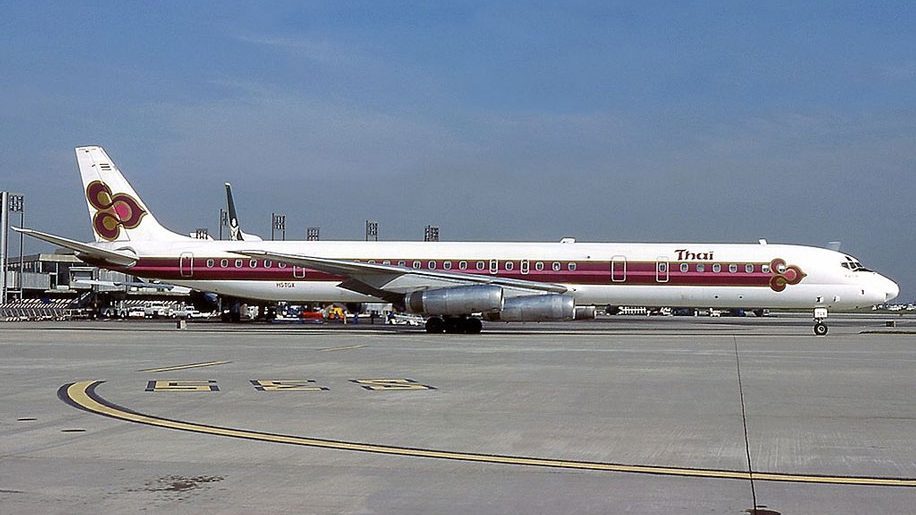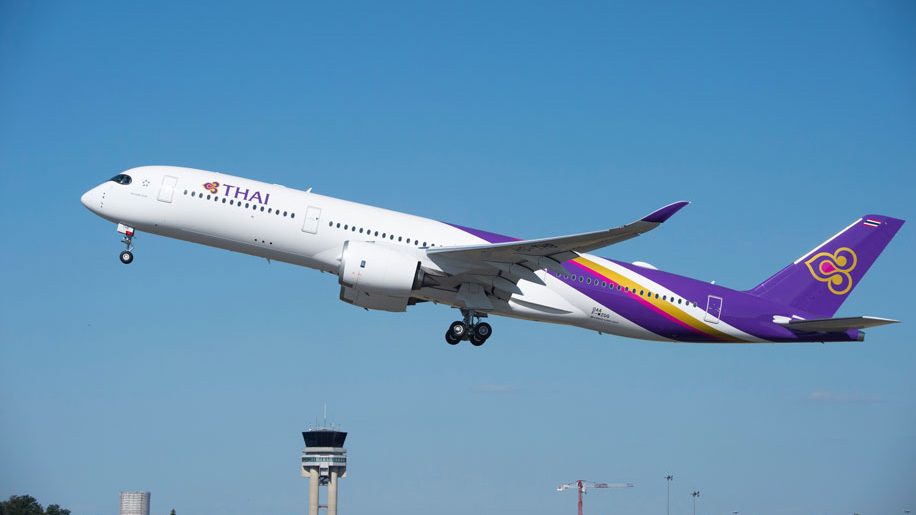
Did you know Thai International inaugurated non-stop flights linking Europe with South East Asia some 45 years ago?
It’s difficult to comprehend today but Thailand’s national airline was a market leader with its McDonnell-Douglas DC-8/62 aircraft. Indeed it took the B747 a further 15 years before it could fly non-stop to SE Asia.
The carrier’s time-saving flights for business people opened up Asia and Australia with innovative fares, and marketed Bangkok as a regional hub.
Thai’s special fares (sold by the trade to circumvent IATA restrictions) were a hit with business and leisure travellers alike. Flights were two-class – no business class at that time.
All this happened during the early years of Business Traveller.
In those days Thai Airways International (the carrier’s current name) was mentored by Scandinavia’s SAS. Co-operation was so close that Thai even used SAS’ livery… complete with the Viking longboat along its aircraft fuselage.
Thai succeeded with its hub strategy (as did SIA and Cathay Pacific later) because it was not a member of trade body IATA.
Thai wasn’t bound by thousands of regulations which IATA imposed on its members which included British Airways, KLM, Swissair, Lufthansa, Qantas, JAL and so on.
Another perk for passengers was Thai’s improved catering in both classes (IATA restricted what members could serve) plus free drinks in economy class (something not allowed by IATA).
Non-stop air service to Asia is commonplace today. Back in the early seventies all other carriers’ flights between Europe and SE Asia made one, two or even more en route stops.
Thai brought nonstop service to SE Asia with its long range McDonnell-Douglas DC-8/62s. No other aircraft had that nonstop capability (not even Boeing’s 707 then operated by most European and Asian airlines).
But then Thai began to lose its shine. Over the decades there has been political interference from the Thai government plus endless management changes. Thai lost any clear vision of its future, unlike rivals.
Even though Thailand’s visitor traffic grew many times over the past 45 years, Thai’s capacity out of London (let alone Europe) has not developed accordingly.
Indeed faced with declining market share (mainly thanks to the Gulf airlines for whom Bangkok is a leading destination) Thai actually slimmed its European network in recent times.

It is true that Thai continues to fly into London Heathrow twice daily but compare that to what SIA, MAS and Cathay Pacific now offer.
Thai suffered a further setback in 2015 when the country’s aviation sector was placed under airline body ICAO’s red flag.
The US authorities then stepped in and downgraded Thailand’s civil aviation status to FAA Category 2. Thai suspended US services.
Thailand has since reorganised its civil aviation structure. It is hoped the FAA will upgrade Thailand’s aviation to Category 1 next year.
Should that happen Thai would be free to resume US service.
As for London Heathrow one imagines Thai is secure with its twice daily service. But given the slot shortages, let alone their cost (in 2016 Oman Air paid Kenya Airways some US$75 million for one peak-time slot), it’s hard to imagine Thai increasing flights.
Had Thai acted years ago (as did its rivals when Heathrow was less busy) it would now be flying into London three or more times daily.
Credit for the image above: Michel Gilliand, from commons.wikimedia.org












